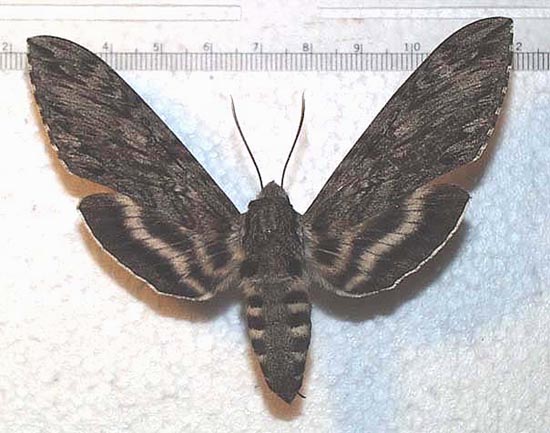
Lintneria separatus courtesy of Bruce Walsh.
This site has been created by Bill Oehlke.
Comments, suggestions and/or additional information are welcomed by Bill.
TAXONOMY:
Family: Sphingidae, Latreille, 1802 |
|
|
Updated as per The Hawk Moths of the North America, 2007, James P. Tuttle (Sphinx to Lintneria); April 2009 Updated as per CATE; April 2009 Updated as per personal communication with Sheri L. Williamson (Chihuahua, Mexico); September 4, 2011 Updated as per personal communication with Kara Jensen (Flagstaff, Arizona, Lintneria separatus larva; September 19, 2016); September 20, 2016 Updated as per personal communication with Derek Bridgehous (Apache County, Arizona, Lintneria separatus); October 6, 2018 |

This site has been created by Bill Oehlke.
Comments, suggestions and/or additional information are welcomed by Bill.
TAXONOMY:
Family: Sphingidae, Latreille, 1802 |
Sheri L. Williamson documents their presence at Conjunto Mogollón archeological site, near Madera, Chihuahua, Mexico September 6, 2006, with a larval image.
Ian Kitching reports that L. istar, separatus, geminus, lugens and L. pseudostigmatica have all been confirmed from Michoacan, Mexico.
Global Mirror data base confirms them from San Luis Potosi, Mexico.
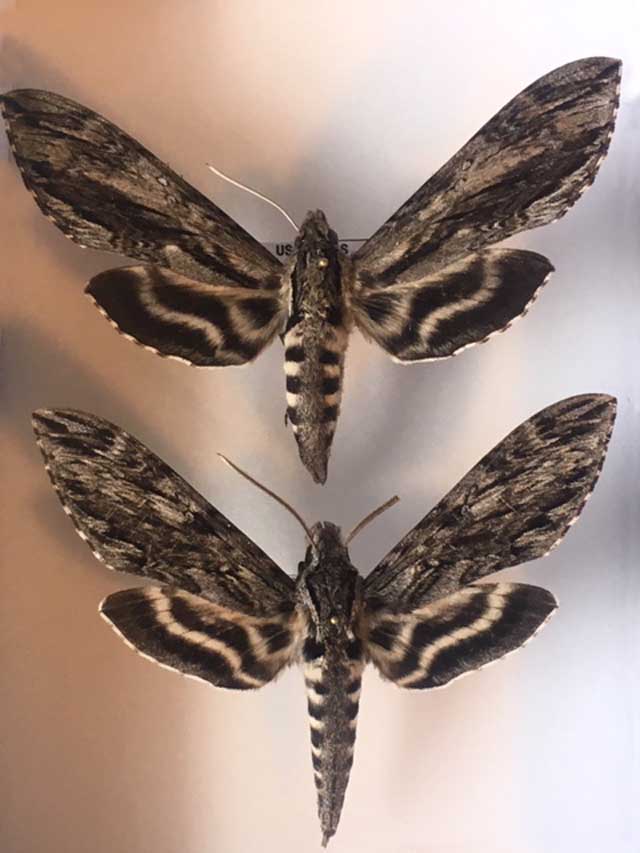
Lintneria istar top, Live Oak County, Texas,
Lintneria separatus bottom, Apache County, Arizona,
courtesy of Derek Bridgehouse.
Until very recently (Tuttle: The Hawk Moths of North America, 2007), this moth was classified as Sphinx separatus.
The upperside of the forewing is dark gray with black and light gray wavy lines. The upperside of the hindwing is black with a brownish gray border and two white bands.
"Relatively large (fwl 47-55 mm,) with ground colour dark grey, sometimes confused with Lintneria eremitoides, but more similar to
Lintneria istar, Lintneria geminus and Lintneria lugens.
"Recognisable by the collar being conspicuously marked with a yellow marginal spot on each side, these spots being vestigial or absent in
Lintneria geminus and Lintneria lugens.
"Forewing upperside with prominent; transverse wavy lines; lacking the pale area with dark distal band that runs from the base to outer margin behind the apex in
Lintneria istar.
"Male antennae very stout." CATE
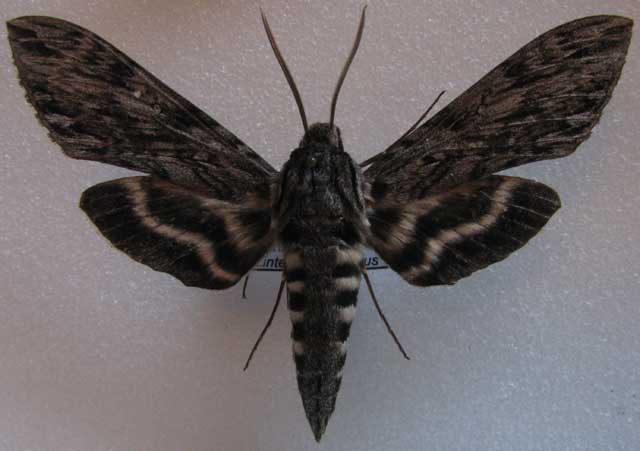
Lintneria separatus, Jct FR 49 and FR 812, Patagonia Mtns., Santa Cruz Co., AZ,
August 7, 2010, 5100ft, courtesy of Evan Rand.
Robert sent me these spectacular images, September 29, 2007, of a larva he encountered on Salvia greggii in his garden in Cochise County, Arizona.
Jim Tuttle did the identification and offers the following comments:
"Great shots. All of the penultimate instars of both Lintneria (Sphinx) istar and Lintneria (Sphinx) separatus that I have reared in the past have been mundane green. Given that the larva is molting, I believe that the orange and black is actually the 5th instar "showing" through. It is L. separatus. I suspect that if they had seen the larva one day earlier, it would have just been greenish."
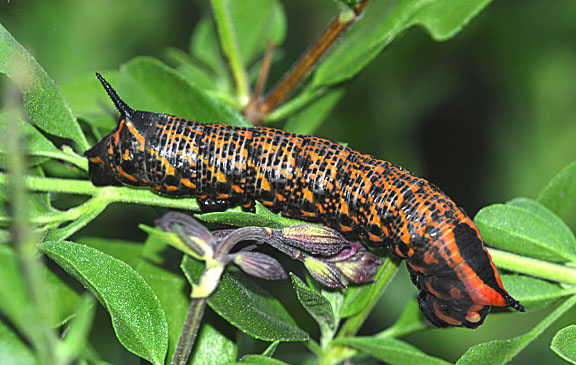
Lintneria separatus, fourth instar molting, Cochise County,
Arizona,
September 29, 2007, courtesy of
Robert A. Behrstock, id by James A. Tuttle.
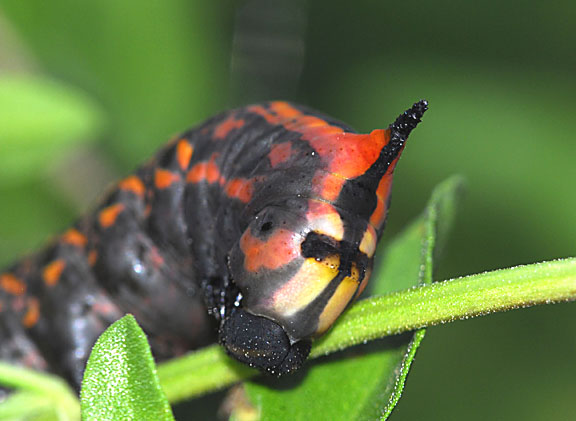
Lintneria separatus, fourth instar molting (head), Cochise County,
Arizona,
September 29, 2007, courtesy of
Robert A. Behrstock, id by James A. Tuttle.
Visit beautiful image of Lintneria separatus fourth instar, Portal, Cochise County, Arizona, September 7, 2010, courtesy of Barbara Miller.
Please visit my special request for images of Lintneria species larvae at Lintneria larvae, and help if you can. It is anticipated that the Lintneria larvae will most often be encountered on Lamiaceae: Salvia (Sage), Mentha (Mints), Monarda (Beebalm) and Hyptis (Bushmints); Verbenaceae: Verbena and Lantana camara (shrub verbenas or lantanas).
Although they may be encountered feeding during daylight hours, one is even more likely to discover them feeding in the evening or after dark.
Two of the greatest clues for discovering larvae are stripped foliage and droppings beneath the plant. You might be quite surprised at what will turn up in the evening or after dark in a flashlight assisted search.
It is believed that all "Lintneria larvae will exhibit "a fleshy thoracic dorsal "horn" in the first 4 instars (unique in the Sphingidae of the world to my knowledge) which is replaced by a thoracic dorsal "hump" with a large black patch in the 5th instar." J.A. Tuttle.
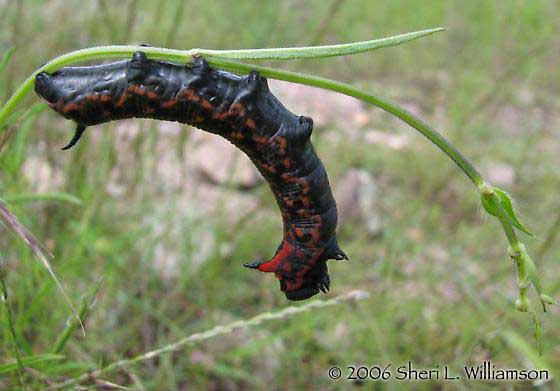
Lintneria separatus fifth instar, Conjuncto Mogollon Archaeological Site,
near Madera, Chihuahua, Mexico,
September 6, 2006,
courtesy of Sheri L. Williamson, as posted on Bug Guide.
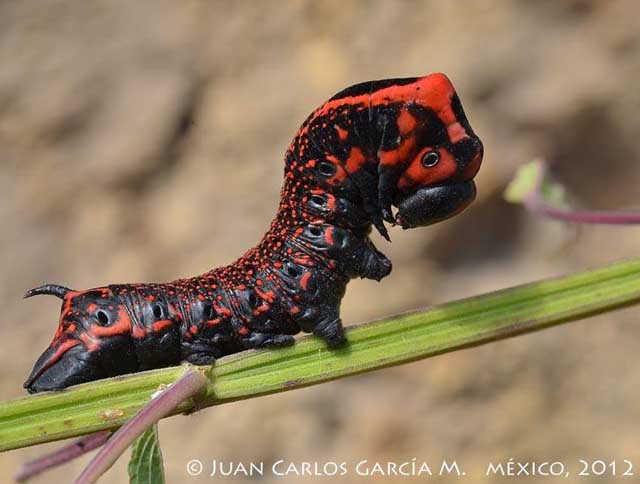
Lintneria fifth instar, Tlalpujaha, Michoacan, Mexico,
probably
L. separatus, 2012, 2500m, courtesy of Juan Carlos Garcia.
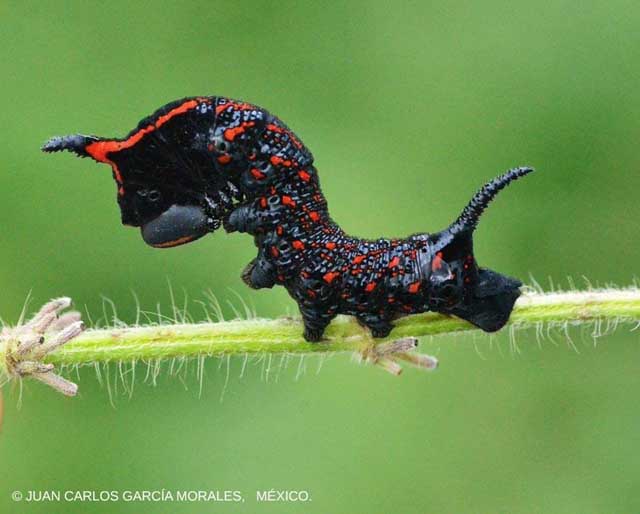
Lintneria earlier instar, Tlalpujaha, Michoacan, Mexico,
possibly?? L. separatus, 2012, 2500m, courtesy of Juan Carlos Garcia.
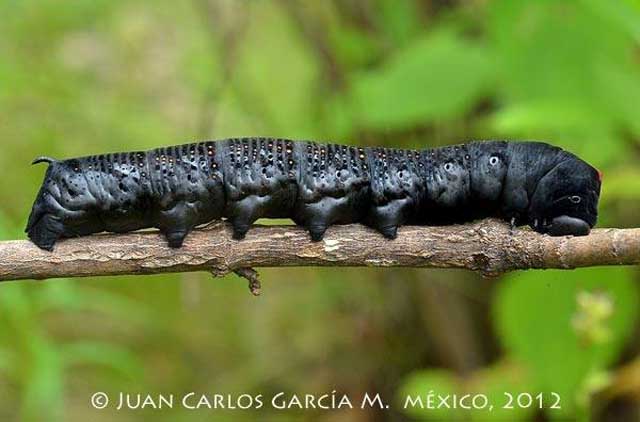
Lintneria ?? fifth instar, Tlalpujaha, Michoacan, Mexico,
possibly very dark L. separatus 2012, 2500m, courtesy of Juan Carlos Garcia.
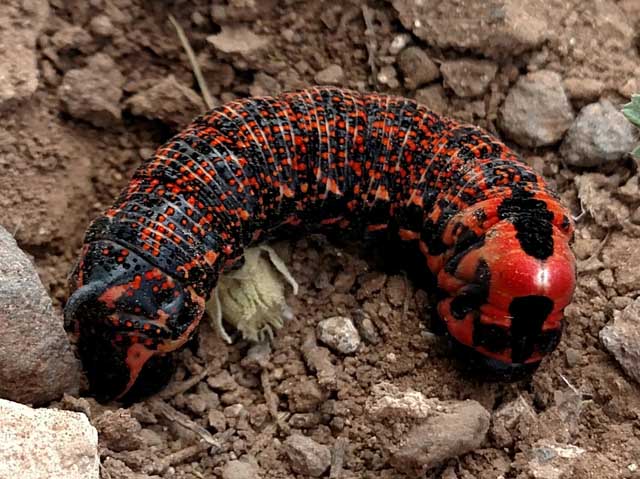
Return to Sphingidae Index
Return to Sphingini Tribe
This page is brought to you by Bill Oehlke and the WLSS. Pages are on space rented from Bizland. If you would like to become a "Patron of the Sphingidae Site", contact Bill.
Please send sightings/images to Bill. I will do my best to respond to requests for identification help.
Enjoy one of nature's wonderments: Live Saturniidae (Giant Silkmoth) cocoons.
 Show appreciation for this site by clicking on flashing butterfly to the left. The link will take you to a page with links to many insect sites. |